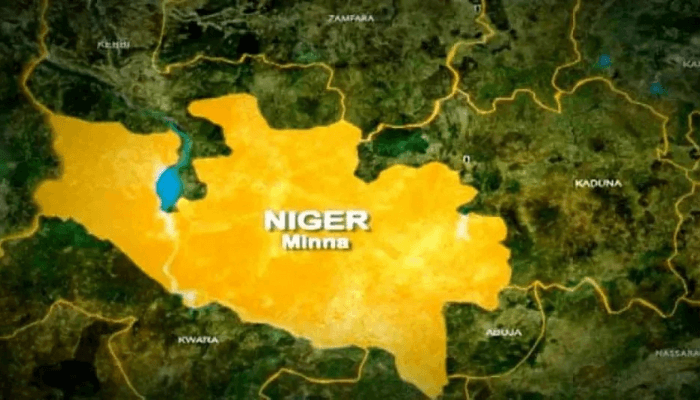The year 2025 has become a disaster list for Niger State, Nigeria. From catastrophic tanker explosions to devastating floods, the incidents have exposed weaknesses in infrastructure, emergency response and public behaviour. Survivors' testimonies, official responses, and government actions tell the story of the tragedy but also offer hope for reforms.
In January, the worst scene unfolded at Dikko Junction near Suleja, when a fuel tanker overturned. The contents of the tanker loaded with petrol spilled and locals rushed to collect fuel. What followed was a tragic explosion. The death toll was at least 86 and dozens were injured.
A young survivor, who gave his name as Moses, recalls: “I thought I was coming to get fuel to help my family – then the flames burst. I lost two friends.”
Subsequently, the Niger State Emergency Management Agency (NSEMA) confirmed a mass burial of 80 victims in Dikko, five of whom were taken away by their relatives and one later died in hospital.
State Governor Umaru Bago described the incident as “worrying, heartbreaking and unfortunate” and pledged support to the victims.
Following the incident the Federal Fire Service warned about the dangers of reckless behavior by tanker drivers and the practice of draining fuel from accident sites.
Shortly afterwards, in early March, another tanker explosion occurred in Karamin Rami village in Mashegu Local Government Area. The truck overturned, its contents flowed into a river where farmers were working and then caught fire; Seven people lost their lives and one was injured.
Farmers near the leak described how the flames spread across the field and burned vegetation and equipment.
The floods added a very different stress to the state. In May, heavy rains lashed Mokwa local government area. NSEMA reported that at least 151 bodies were recovered, 3,018 persons were displaced, 503 houses and 265 houses were affected, several roads and two bridges were washed away.
In June, the figures updated the death toll: at least 206 people died, 458 houses were destroyed, 180 hectares of agricultural land were inundated, and about 9,560 residents were in urgent need of relief.
An elderly flood victim, whose house collapsed in Tiffin Maja area, said: “The water came in the night, when we woke up our roof disappeared and our children were washed away. I have nothing now.”
Governor Bago personally visited the temporary IDP camp at Tiffin Madza Primary School, announced a relief package of ₦1 billion and 50 trucks of mixed grains for flood victims, and awarded a ₦7 billion road and bridge project along the Mokwa-Raba corridor. He urged residents not to build on waterways and committed to rehabilitating affected families.
Considering the response, NSEMA mobilized teams, conducted rapid assessments and launched a flood-awareness campaign across the emirate of the state.
Meanwhile, the latest was in October where a fuel tanker accident occurred. Around October 21, on Bida-Agai Road between Essa and Badeggi communities in Kacha LGA, a tanker loaded with fuel overturned and residents rushed to collect the spillage. This was followed by a massive explosion, killing at least 40 people and injuring about 50.
Emergency services described the scene as horrific: victims were found burnt beyond recognition, asphalt melted, power poles collapsed and soil and water contaminated.
The director-general of the Niger State Emergency Management Authority, Abdullahi Baba Ara, confirmed the latest number of casualties, saying the death toll had risen to 42, while 52 people sustained various injuries.
“According to the last count, the total number of dead is 42, and the number of injured persons is 52,” Ara said in an interview on ARISE News.
He said the explosion occurred when villagers tried to collect fuel from the fallen tanker.
“The tanker fell due to poor road conditions, following which villagers rushed to the spot to collect fuel, leading to the devastating fire,” he said.
Also read: Death toll from floods in Niger state rises to 117, emergency official says
Earlier, the National Emergency Management Agency (NEMA) had shared on Wednesday. During this incident, 39 people were killed and more than 60 people were seriously burnt.
“The blast took the lives of 39 people and left more than 60 seriously injured, including men, women and children.
“The victims were reportedly among those who were attempting to drain fuel from the downed tanker when the explosion occurred,” NEMA said.
It said multiple agencies are working together in rescue efforts to evacuate victims for treatment.
“The NEMA team, working with NSEMA, Police, NSCDC, FRSC, DSS, local vigilantes and community volunteers, successfully evacuated the injured victims to nearby health facilities including Essan Primary Health Centre, Idris Private Hospital and Federal Medical Centre, Bida for emergency treatment,” the agency said.
Expressing condolences to the victims and affected families, NEMA Director General Zubaida Umar Abubakar warned members of the public to refrain from draining fuel from crashed tankers, stressing that such acts repeatedly lead to loss of lives and property, which could have been avoided.
Meanwhile, the Minister of Information and National Orientation, Mohammed Idris, expressed sadness over the latest tragedy and lamented that despite continued sensitivity, citizens still risk their lives to collect fuel.
The minister said, “This incident is tragic because despite public awareness and repeated warnings about the dangers of draining fuel from downed tankers, some citizens still take such life-threatening risks.”
In these disasters, a clear pattern emerges: heavily trafficked highways of fuel and other flammable materials; weak road infrastructure; risky behavior by communities attracted to the dropped product; and a reactive rather than preventive emergency-system. NSEMA has repeatedly warned about late reporting and weak local firefighting capacity.
In response, the governor has ordered the state Ministry of Transport and Works to rapidly rehabilitate the disaster-prone Bida-Agayi-Lapai road, and called for a public-education campaign to discourage fuel-scooping. He also promised assistance to the families of the victims and medical treatment for the victims, although NGOs say many of the injured are undergoing treatment.
NSEMA, under Abdullahi Baba-Ara, its Director-General, has always appealed to the federal government, local governments and communities to collaborate on early-warning systems, road-safety protocols and emergency-service capacity.
Also read: More than 38 killed, dozens injured in tanker explosion in Niger state
The agency's recent flood-awareness campaign included the entire eight emirate councils of Niger State, indicating an effort to shift from a reactive to a preventive posture.
Nevertheless, the scale of destruction is still overwhelming. Due to flooding in Mokwa, entire communities were uprooted; Tanker explosions caused dozens, sometimes hundreds, of lives to be destroyed within minutes.
It is worth noting that the drivers of disasters in Niger State are structural: poor road networks repeatedly lead to massive vehicle accidents, while high fuel prices have led people to take excessive risks at accident sites. On the flood front, climate change, deforestation and inadequate drainage systems compound the impact.
The human toll reflects economic losses: destroyed homes, farms, shops, livestock, abandoned roads, and an increased burden on public and private resources. The costs of reconstruction, relief, and trauma-care will test both state and federal capacities.
In a series of statements, Governor Bago and NSEMA officials reiterated the need for collective responsibility: “Residents must follow safety warnings; the government must provide safe roads and a strong response; communities must respect building codes.” As the governor said during his Mokwa site-visit, “Allah has decided everything, and He will comfort the people during this difficult time.”
As the calendar turns to the second half of 2025, the question for Niger State is clear: will the lessons of January, March, May and October become catalysts for improvement – or will the next title be another preventable tragedy? The government's response so far reflects intent, but intent must give way to concrete outcomes – safe roads, functional fire services, disciplined fuel-transportation, and flood-resilient communities.











